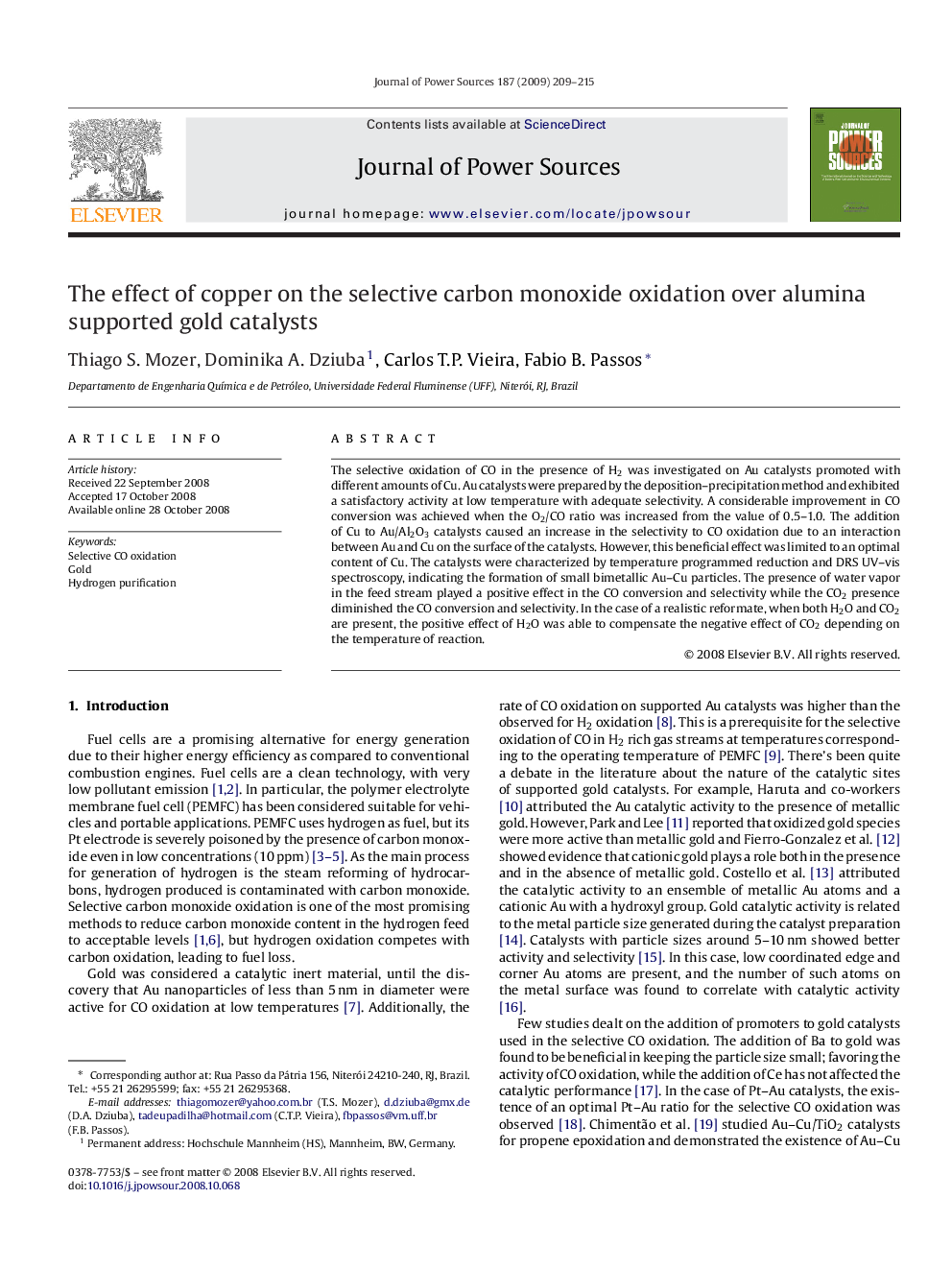| Article ID | Journal | Published Year | Pages | File Type |
|---|---|---|---|---|
| 1285339 | Journal of Power Sources | 2009 | 7 Pages |
The selective oxidation of CO in the presence of H2 was investigated on Au catalysts promoted with different amounts of Cu. Au catalysts were prepared by the deposition–precipitation method and exhibited a satisfactory activity at low temperature with adequate selectivity. A considerable improvement in CO conversion was achieved when the O2/CO ratio was increased from the value of 0.5–1.0. The addition of Cu to Au/Al2O3 catalysts caused an increase in the selectivity to CO oxidation due to an interaction between Au and Cu on the surface of the catalysts. However, this beneficial effect was limited to an optimal content of Cu. The catalysts were characterized by temperature programmed reduction and DRS UV–vis spectroscopy, indicating the formation of small bimetallic Au–Cu particles. The presence of water vapor in the feed stream played a positive effect in the CO conversion and selectivity while the CO2 presence diminished the CO conversion and selectivity. In the case of a realistic reformate, when both H2O and CO2 are present, the positive effect of H2O was able to compensate the negative effect of CO2 depending on the temperature of reaction.
